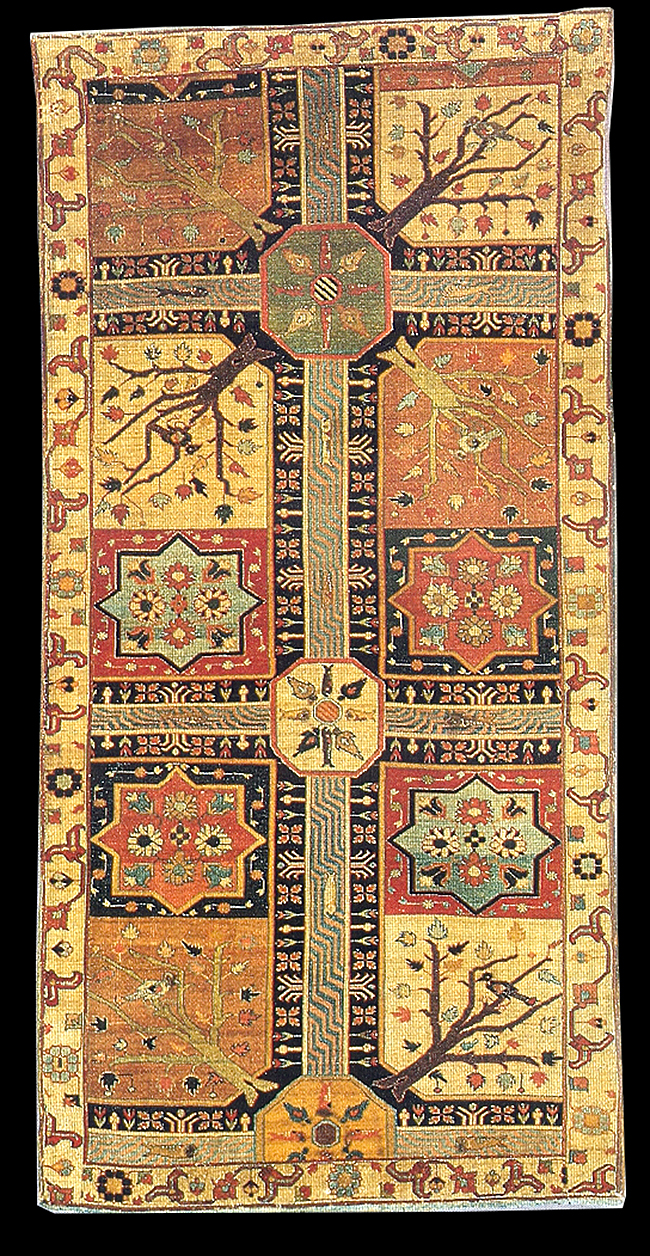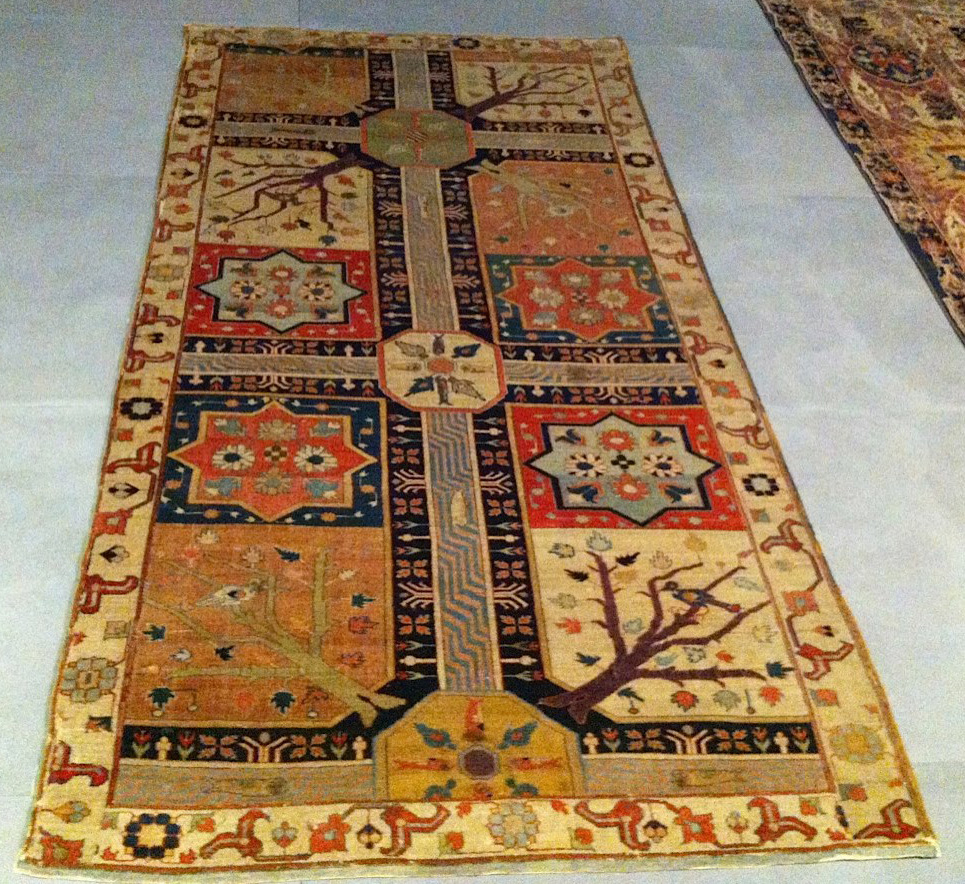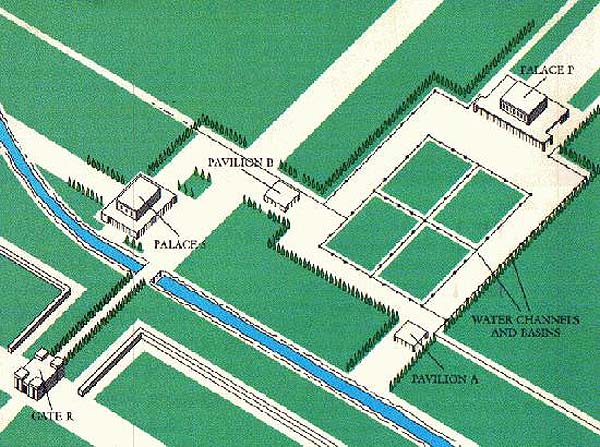|
Early Azerbaijan
"Garden / Chahar Bagh" carpet, NW Iran, early 18th century. Louvre Museum, Paris,
France

The design consists of a central watercourse, with tributary
canals of various sizes, interrupted by islands or by ponds containing
waterfowl and fishes, lined by avenues of stylized small trees and
shrubs that surround flower plots, and often shaded by great plane
trees.
The earliest, best examples of garden carpets, dating
from the late 16th or early 17th century, are in museums at Jaipur in
India and at Glasgow. They share
characteristics of weave and colour with vase carpets. In the early 19th
century the design in certain NW Iranian pieces degenerated into a mere
checkerboard of flower beds. The most celebrated Persian garden
carpet, the Spring of Khosrow Carpet, made for the palace of a
6th-century Sāsānian king, is little more than a legend, for the
carpet itself has not survived, and descriptions of it by Arab writers
do not disclose its technique. Certain Turkmen or Shirvan rugs have
also been described as garden rugs. In a broad sense, every Middle
Eastern floral carpet or rug actually represents, in its own fashion,
a garden—especially if it is filled with prancing animals.


Layout of the Pasargadae palace complex
Gate A is the entrance
building to the complex
Palace S, situated just across the river is
the apadana or audience hall
The chahar bagh gardens are flanked by
pavilions A and B
Palace P is thought to be the private royal
residence
|



